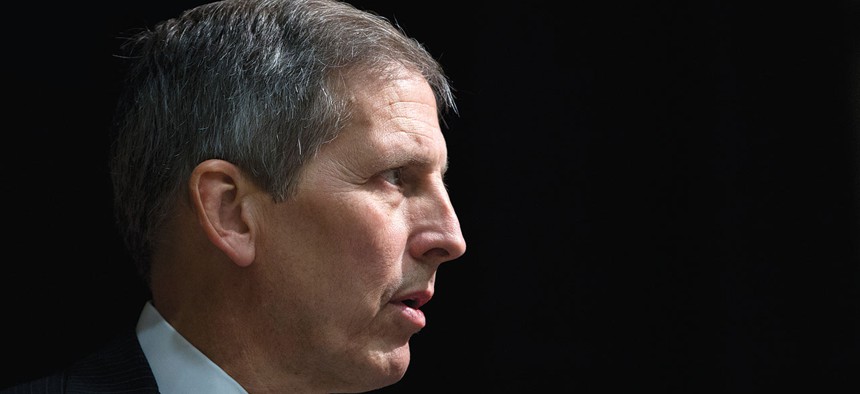
Jose Luis Magana/AP
The VA’s Company Man
Deputy Secretary Sloan Gibson seeks a ‘sea change’ in customer service for veterans.
Sloan Gibson spent five years interacting with service members while running the USO. But it’s his previous 20 years as a banking executive he draws on in his role as the No. 2 executive in a scandal-rocked Veterans Affairs Department.
An advantage for the 1975 West Point graduate is his decades-old friendship with VA Secretary Bob McDonald. Together they’re pressing for a sea change in the management of the department’s 350,000 employees, to turn a staff that misreported patient backlogs and medical center construction cost overruns into a world-class customer service organization.
Gibson hopes to use the crisis to “do things now that the VA otherwise could never have done,” he told a contractors’ gathering in June. He contrasted his $169 billion-a-year department with a Fortune 500 company. The VA “has 535 board members, meaning Congress, [and] a workforce 62 percent unionized, where hiring is hard, firing is harder. There’s an onerous acquisition process, and an entrenched renowned bureaucracy that is visible like an open book, subject to scrutiny by outside interests,” he said. “It is not a system that is integrated.”
VA’s large-scale programs in its nine lines of business comprise 150 hospitals, 24,000 doctors, 91,000 nurses and 1,800 academic affiliations in which medical researchers also treat patients at VA facilities. But imagine “running the largest health care system with a financial management system that is 20 years old,” Gibson said.
Improvements in customer service are being achieved through budget flexibility; Gibson notes that Congress agrees that hepatitis C does not respect budget cycles. “We have to build a requirements-based budget, which is a sea change for an organization that historically has managed to a budget number” rather than calculate resources based on the needs of veterans.
Though nearly all veterans express satisfaction with VA hospitals and rehab centers once they access their services, Gibson expresses the challenge succinctly: “The more care we provide vets, the more veterans come for care.”
NEXT STORY: Fighter of the Future







